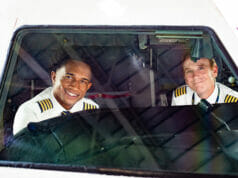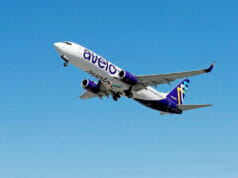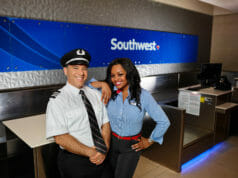
Emirates is the fastest growing and largest international airline in the world. The Dubai-based carrier has a fleet of more than 240 aircraft, all of them wide-bodies, and its network covers more than 150 destinations in 80 countries over six continents.
The airline was launched on 25th October 1985 and recently celebrated its 30th anniversary. Emirates had a modest beginning and flew its first routes out of Dubai with just two aircraft — a leased Boeing 737 and an Airbus 300 B4. It has now evolved into a globally-influential travel and tourism conglomerate known the world over for its commitment to the highest standards of quality in every aspect of the business.
Young, modern fleet
Emirates’ dedication to comfort and safety for its customers and responsibility to the planet means that it flies one of the most modern, environmentally friendly and youngest fleets in the world. In 2016, the airline will retire 26 aircraft, where the average age of the Emirates aircraft slated for retirement will be 15.7 years, well-below the average industry retirement age of 25.
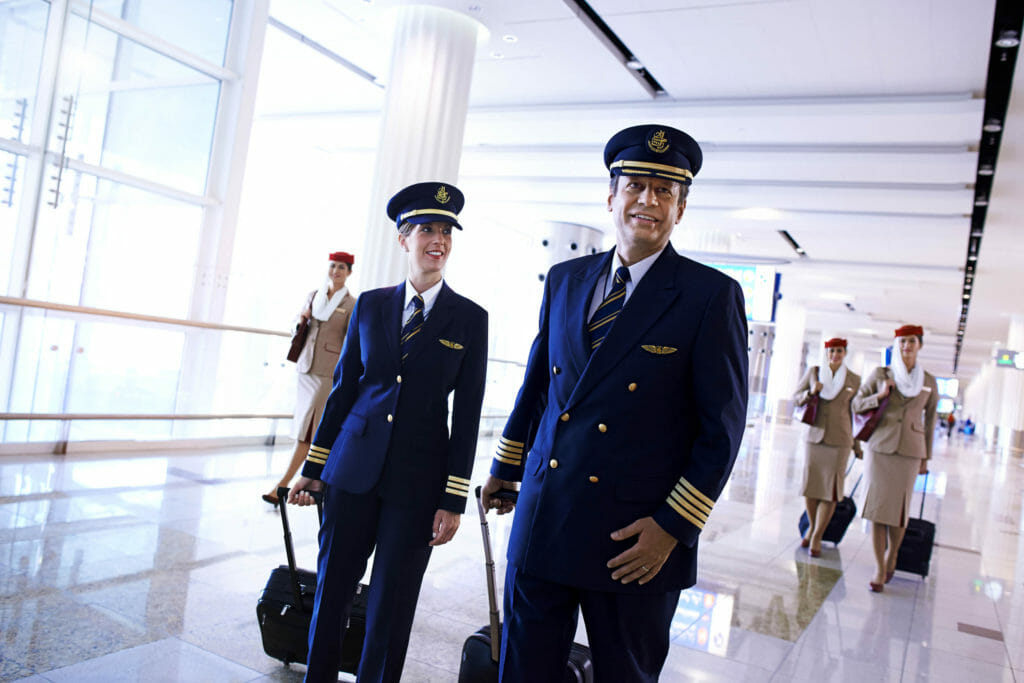
Balancing its aircraft retirement program, Emirates’ order book stands at over 250 aircraft from Airbus and Boeing. In 2016 alone, the airline will take delivery of 36 new aircraft, including 20 A380s and 16 Boeing 777-300ERs. These two aircraft types are recognized as two of the most efficient and quiet commercial airplanes available, emitting on average 12% less carbon dioxide than the aircraft being retired. At the end of 2016, the aircraft retirements and new deliveries will put Emirates’ average fleet age at 5.6 years – dramatically younger than the global average. A recent analysis shows that the average fleet age for the top five airlines in North America is 13.6 years, while the average fleet age for the top five airlines in Europe is 10.7 years.
Expanding network
Emirates continues to expand its network of destinations, leveraging the unique geographical position of Dubai to connect more cities across the world with just one convenient stop via Dubai. In 2015, Emirates launched new services from Dubai to Bali, Multan, Mashhad, Bologna, Istanbul’s second airport Sabiha Gokcen and Orlando – its 10th US destination.
The first of many route launches in 2016 will be a non-stop service from Dubai to Panama City on 1st February. Panama City will be the first gateway in Central America, and at 17 hours 35 minutes’ flying time, the world’s longest flight. The airline will also expand its services in mainland China with flights to Yinchuan and Zhengzhou from 3rd May 2016.
To operate the constantly-expanding fleet, Emirates recruits candidates for the flight deck crew from around the world, to work alongside a multicultural team of more than 160 nationalities.
Living in Dubai
Emirates pilots enjoy a competitive tax-free salary, company accommodation, medical and dental insurance, 42 days of annual leave per year plus many more benefits. In addition, they will have access to high standards of education, leisure and sports facilities in Dubai – a city that is ranked as one of the safest and most desirable locations in the world to live and work in.
While Dubai has become a powerful hub for connections due to the strength of Emirates’ network, it is also a secure and cosmopolitan city that is ideal for families and kids. The city’s advantageous geographical position between East and West makes it ideal for a home base while traveling around the world. It is possible to reach around one third of the world’s population with a four hour flight.
Many still have the misconception that living in the Middle East is fraught with restrictions, but any visitor to Dubai can vouch that the booming city perfectly marries its conservative values with a modern and open attitude.
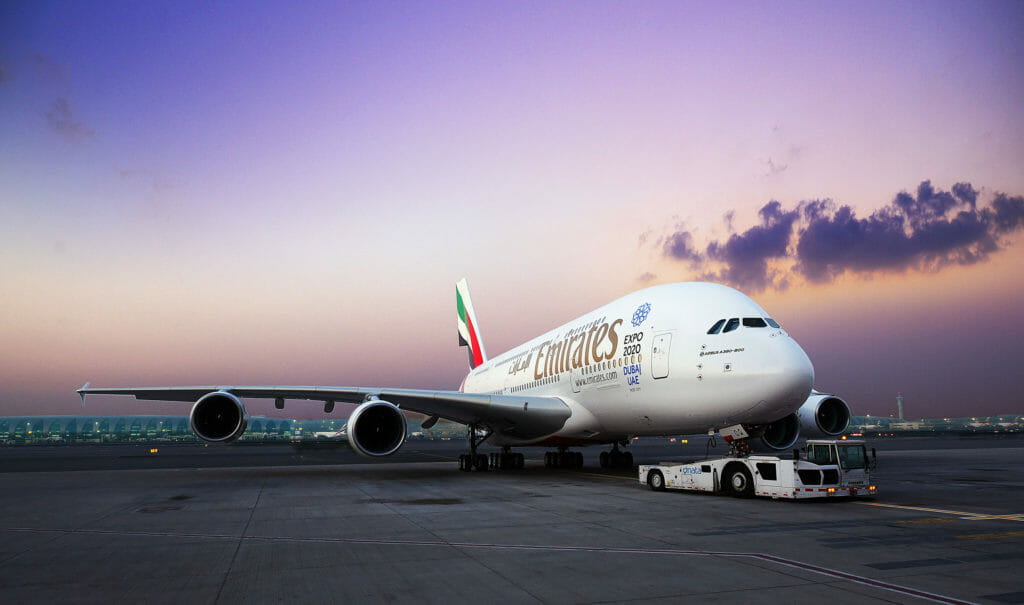
Joining Emirates
Emirates looks for motivated, technically-proficient and experienced pilots who aspire to excellence. Applicants should have an ICAO ATPL along with excellent English language fluency (to ICAO English level 4 or above). Recently the airline changed its requirements and now accepts applications from pilots trained to fly multi-engine, multi-crew, turboprop and jet aircraft, including business jets, with a MTOW of 20 tons or more.
The pilot’s program at Emirates Airline provides extensive training, career development and progression plans. An Emirates pilot job provides professional stability; job security and an exciting and rewarding career.
Successful candidates are flown in from an Emirates destination to Dubai for training. The first week is dedicated to an induction which will include various company briefings and other joining formalities.
In the second week of training, pilots begin their Type Rating (around 12 weeks depending on related experience), in preparation for a career as an Emirates commercial pilot.
Lessons that are computer based — including but not limited to — Aircraft Systems, TCAS, ETOPS, ILS/PRM, RNAV and RVSM – will be followed by 10 sessions at the Fixed Base IPT Trainer and 10 Full Flight simulator sessions, culminating in a License and Skills test.
The candidates will go through two final simulator sessions to qualify for Low Visibility Ops and Zero Flight Time before Line Training. Line Training will commence with an observation flight, followed by between 12 and 34 sectors of Line Training depending on related experience, mostly to places the pilots have never flown before. It will conclude with up to 6 sectors flying as Safety Pilot.
After a final Line Check, the airline pilot recruitment and training process is complete, and candidates become a fully qualified commercial pilot on a Boeing 777, an Airbus A380 or A330 aircraft with Emirates.
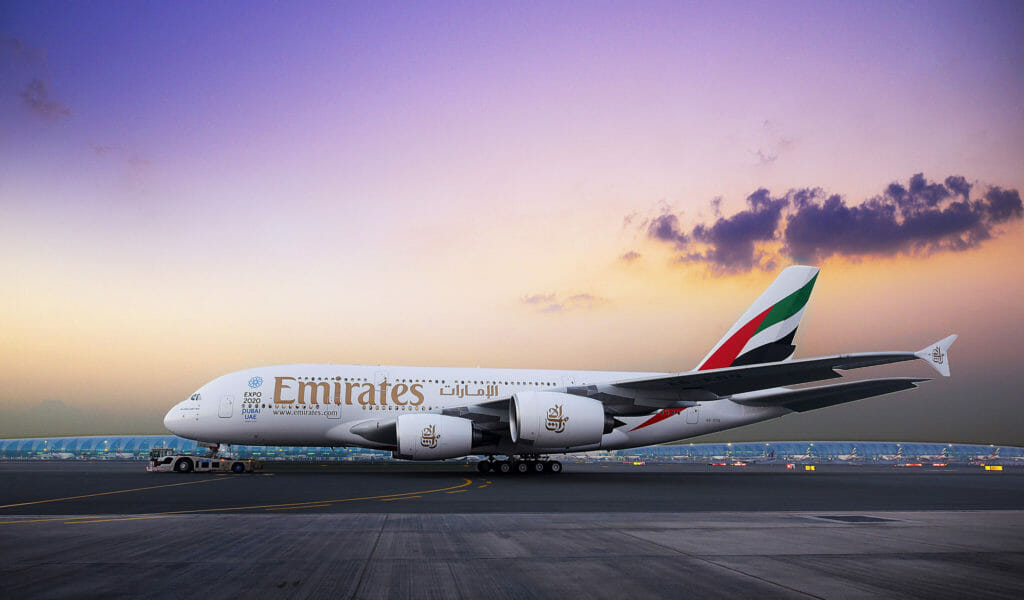
Career opportunities
There is an abundance of opportunities for career progression within Emirates Airline and one third of the pilots stay more than a decade with the airline as they advance their aviation careers. Pilots tend to get upgraded from First Officer to Captain in a relatively short period of time, especially in comparison to other long-haul carriers. First Officers can advance their professional careers as Synthetic Flight Instructors (SFIs). Alternatively, they can take up specific roles as Management Pilots.
Captains can advance into other professional roles such as Training Captains, CRM Instructors, Flight Operations Audit Captains, or Management Pilots.
As one of the world’s fastest-growing airlines, Emirates offers a bright and secure future as a commercial airline pilot. The airline’s plans for an expanding fleet and, route network and increased frequency on existing routes have resulted in 700 commercial airline pilot positions that need to be filled within the next 18 months.
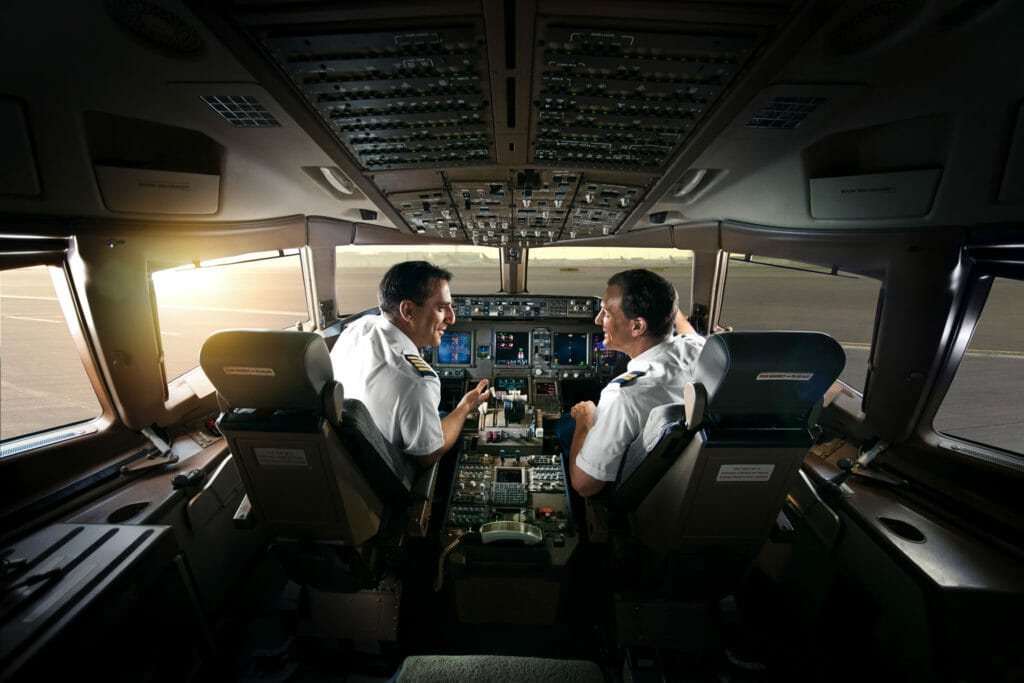
Interview with Alison Ward – Vice President, Recruitment, Emirates Airline
Pre Interview:
Craig: How do you select applicants to be brought in for an interview?
Alison: We have a team of pilot selection specialists who review each detailed application and determine if the pilots meet our minimum selection criteria. This has recently changed so now pilots who fly lighter multi-crew aircraft, as well as those who fly business jets are eligible for Emirates! Those who do are shortlisted and then the strongest candidates are invited for assessment.
C: What can an applicant do to increase their chances of being called for an interview?
A: They can ensure that they take their time to complete the online application in detail. It is a long process, but it is essential considering the technical nature of the job and the varied experience pilots may have accumulated. Also ensuring that they review the minimum criteria for Emirates selection before they decide to apply is important. Maintaining the currency of their application is also valuable when it comes to such things as flying hours, licenses and type-ratings.
We have recently updated our selection criteria, which are now: having an ICAO ATPL along with excellent English language fluency (to ICAO English level 4 or above); at least 2000 hours from multi-engine, multi-crew, turboprop and jet aircraft, including business jets, with a MTOW of 20 tons or more.
Even if the pilot hasn’t met the minimum hours requirement it is a good idea to apply so we can keep their names on record and then update their online profile as they reach closer milestones.
C: How critical is it to attend a job fair to get an interview?
A: It is only critical from the candidate’s perspective. This is an opportunity for them to gather information about the job and the lifestyle before deciding if it’s for them and whether they should pursue a career with Emirates. It is still great from Emirates’ perspective to see candidates who are motivated and taking the initiative to attend the job fairs, so this is a great start too!
C: What is the best way to prepare for an interview with your company?
A:
The best way is to do more manual flying; research the company, lifestyle and job conditions thoroughly; think about both positive and challenging experiences you have had throughout your recent flying career to discuss; and come prepared to be very honest and transparent throughout the whole assessment process including the psychometrics.
Interview:
C: Do you recommend that applicants get to your headquarters city the day before and get a hotel room for the night?
A: We ensure all candidates we fly in for the assessment are arriving at least by 10pm the day before so that they are adequately rested. If they have come from far away like the USA, we will fly them in and accommodate them for a rest day to ensure they can perform at their best.
We also encourage spouses to attend our Dubai tour during the assessment process which includes our Emirates clinic, an Emirates apartment and villa, a school inside an Emirates housing area, as well as experiencing seeing some more of the city. Should the spouse be a husband or wife, we will also arrange for their UAE visitor’s visa and they are permitted to stay in the hotel with their spouse should they want to.
C:
Can you walk me through a typical day of interviews?
A:
The ‘second stage’ of the assessment center involves a day with group exercises, individual psychometric feedback from an Emirates psychologist, and a panel interview with both a recruiter and pilot specialist.
C: What kind of questions can an applicant expect to be asked?
A: Anything which asks them to draw on their experiences and discuss various situations they may have encountered if they are selected to fly with Emirates.
C: Can you give me some examples of the TMAAT questions that you like to ask?
A: Two examples are:
Please explain in detail when you have been required to work effectively within a multicultural team?
Can you please talk us through a detailed example of when you have had to consider the broader business impact on your airline when making a decision?
C: If the TMAAT question being asked does not apply to that applicant can that question be skipped?
A: All pilots will be able to think of experiences they have had which involved the behaviours these questions are inquiring about, so this is why thinking about your career before you arrive is advantageous.
C: What are some of the biggest mistakes that applicants make during the interview process?
A: By far the biggest mistake candidates make is they are not open and honest. Why would we as an airline, which is renowned for our safety standards, give a B777 or an A380 to a pilot we don’t think we have seen be themselves?
No pilot is perfect, (Chuck Yeager aside) and all pilots have made a mistake in their career, so come with confidence that your true abilities are what we are looking for. Pilots are people too and we want to see the real you.
Written test:
C: Is there a written or computer test?
A: No.
Simulator Evaluation:
C: Do you have a simulator ride?
A: Yes
C: What type of aircraft is used for the simulator evaluation?
A: Either a Boeing 737 & 777or an Airbus 320, 330 and 380. Although it cannot always be guaranteed, you will normally be tested in the following:
Boeing type simulator if you are flying an aircraft using conventional flight controls (yolk) Airbus type simulator if you are currently flying a side stick aircraft.
C: What types of scenarios should you expect in the simulator evaluation?
A: We provide all candidates with the full SIM profile and exercises at least 2 days in advance of their assessment for their comfort and benefit. We also provide a detailed SIM brief before they go into the SIM.
As a useful guide however this information may help:
The test will contain 3 main elements:
Takeoff and general air work flown manually using basic instruments (no FD)
An all-engine raw data ILS to LHR RWY 27L
A Line-Oriented-Exercise (LOE) including a problem which will require you to decide and manage all aspects of the flight to its conclusion.
C: What are you looking for in the simulator evaluation?
A: We want to see good technical flying skills, good communication skills, safe practices and some improvement during the session.
C: What are the biggest mistakes applicants make?
A: Not following their usual SOPs which they fly with every day and trying to operate under different parameters. This merely increases their stress and cognitive load, which will always impact on effective performance and decision making.
Post Interview:
C: Do you tell applicants they are hired in person that day?
A: No, we advise candidates they have made the final stage of our process, which is the medical, reference checks, and required additional clearances. These results take several weeks at least before a candidate can be advised that they have been selected and offered a starting date.
C: If not, how long do applicants have to wait to know if they are hired?
A: As outlined above, this can take at least a month but is more often around 5 weeks if there are no unexpected delays to the process such as additional medical tests required or absent referees.
C: How soon can an applicant expect a class date after being hired?
A: We will call a successful candidate to congratulate them and advise them of their course dates during that same phone call. We have courses for both Boeing and Airbus starting weekly so we have great flexibility to provide suitable starting dates to all of our new pilots.
General:
C: How many pilots does your airline expect to hire this year?
A: We are currently aiming to hire upwards of 400 pilots over the next financial year to be able to train enough great pilots to fly our rapidly growing fleet. We currently have 273 B777 and A380s on firm order – so we need a lot of pilots!
C: Does Emirates have a pilot referral program?
A: We have a referral program for our existing pilots whereby we trust our own pilots to know what it takes to be an Emirates pilot and which of their former colleagues would fit in really well here.
C: Can you describe the career path program with Emirates?
A: There’s no typical career path with Emirates, but with our growing fleet we have a very fast time to command when compared to the other long haul carriers. First Officers can advance their professional careers as Synthetic Flight Instructors (SFIs) or join the Pilot Recruitment Team.
Alternatively, you can take up specific roles as Management Pilots. Captains can advance into other professional roles such as, Training Captains, CRM Instructors, Flight Operations Audit Captains, Management Pilots or Recruitment Pilots.


















































































































